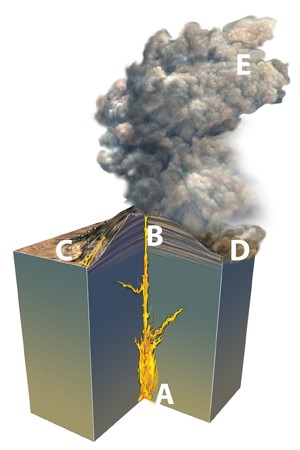What effects might a subsidence inversion have on weather conditions at the ground?
What will be an ideal response?
ANSWER: An inversion represents an atmospheric condition where the air becomes warmer with height. Inversions that form as air slowly sinks over a large area are called subsidence inversions. They sometimes occur at the surface, but more frequently, they are observed aloft and are often associated with large high-pressure areas because of the sinking air motions associated with these systems.
An inversion represents an atmosphere that is absolutely stable. The reason for this is that within the inversion, warm air overlies cold air, and, if air rises into the inversion, it is becoming colder, while the air around it is getting warmer. Obviously, the colder air would tend to sink. Inversions, therefore, act as lids on vertical air motion. When an inversion exists near the ground, stratus clouds, fog, haze, and pollutants are all kept close to the surface.
You might also like to view...
For centuries, people have tried to invent perpetual motion machines to move water uphill or to do other work without an external energy source. Why have these attempts always failed?
A. first and second laws of thermodynamics B. law of conservation of matter C. lack of scientific understanding D. inadequate technological advancement
What type of seismic waves undulates in a wavelike motion and causes the most property damage?
a. Body b. Primary c. Surface d. Secondary e. Density
The approach to the manufacture and use of DDT worldwide is best described as ________
A) ecocentric B) anthropocentric C) focusing on economic externalities D) focusing on deep ecological principles E) biocentric
The site on the figure below that would most likely form a rock with large crystals is
A. A. B. B. C. C. D. D. E. E.